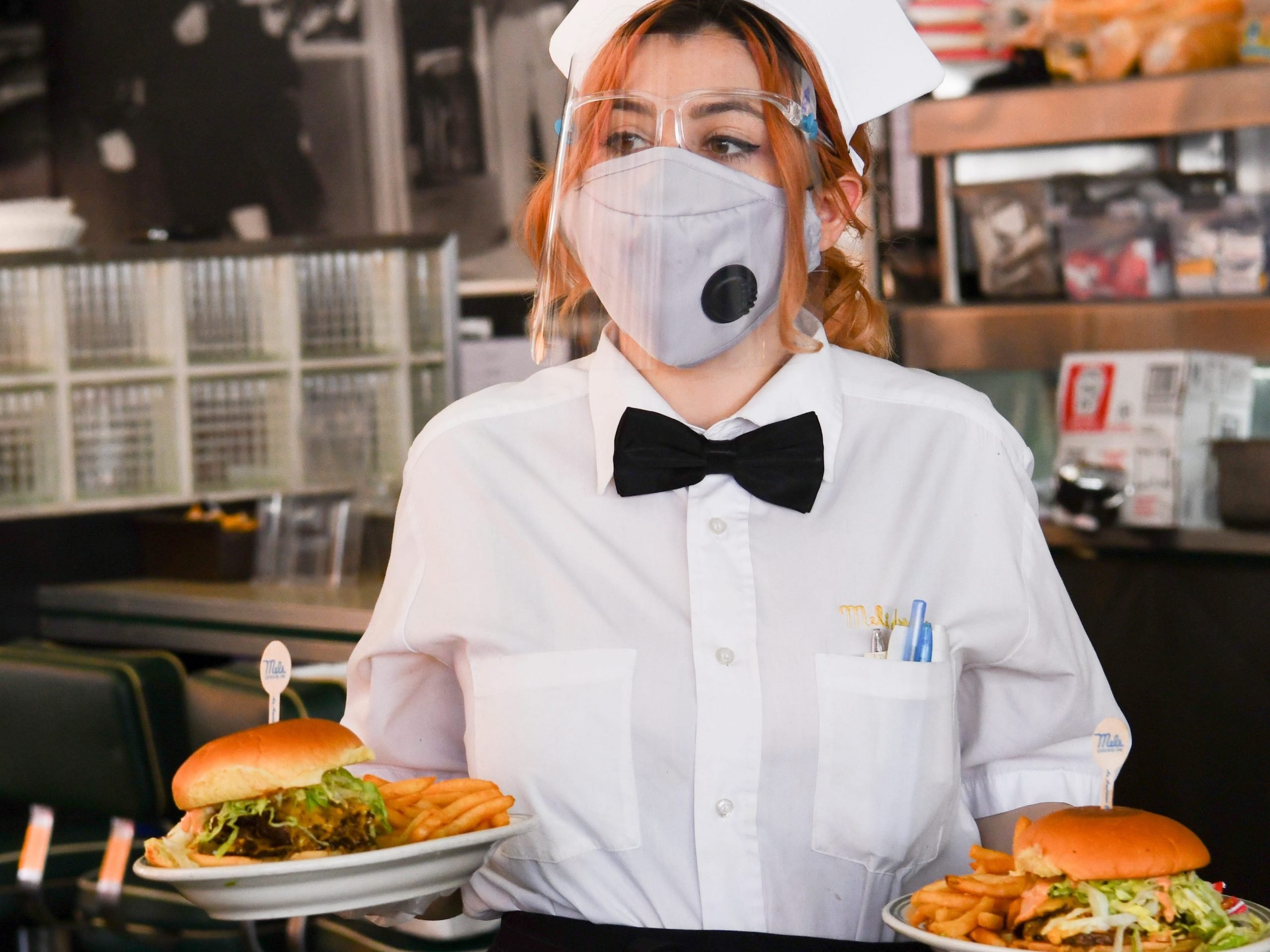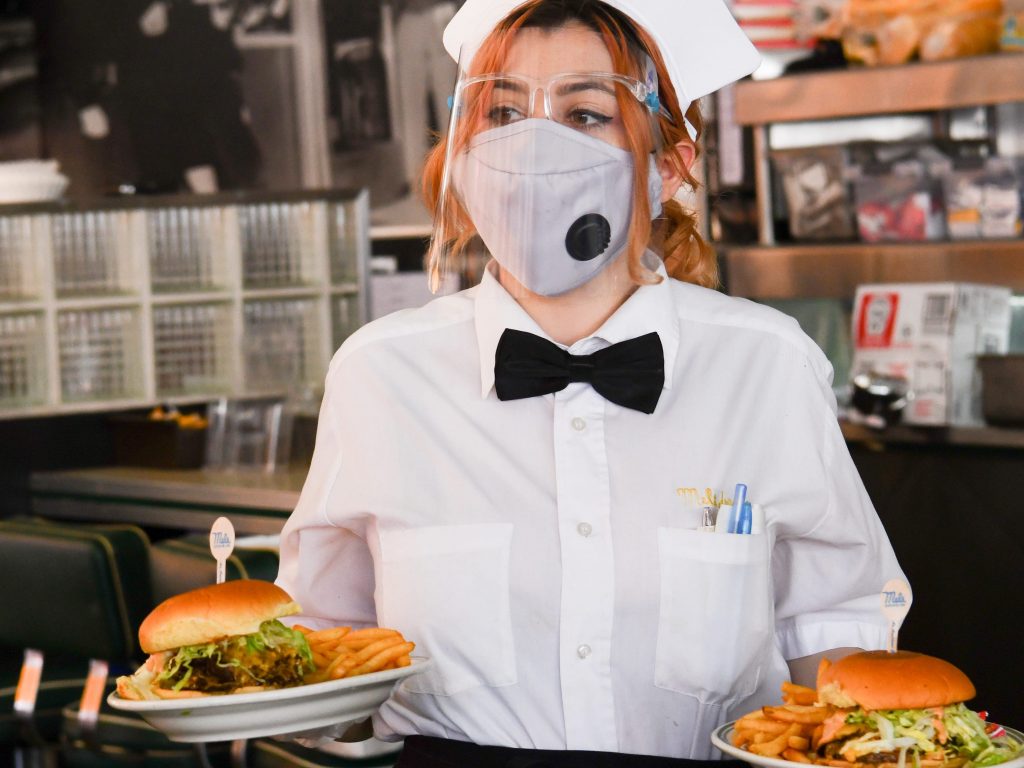
Rodin Eckenroth/Getty Images
- There are 1.5 million fewer workers at bars, restaurants, and cafes than before the pandemic.
- But some types of restaurant have been hit much worse than others, according to new official data.
- Staffing levels at cafeterias and buffets are down 58%, while coffee shops have nearly recovered.
- See more stories on Insider's business page.
The hospitality industry is struggling to fill roles amid the labor shortage hitting industries from education and healthcare and ride-hailing apps – but some types of restaurant are having a harder time finding workers than others.
Fast-casual restaurants, coffee shops, and snack bars have nearly as many employees as they did before the pandemic, but staffing levels at cafeterias and buffets are down by more than half, according to a report by the National Restaurant Association.
Across the board, eating and drinking places are still 1.5 million jobs – or 12% – below pre-pandemic employment levels, according to Friday's job report from the Bureau of Labor Statistics (BLS).
The industry added a net 186,000 jobs in May on a seasonally-adjusted basis, making it the fifth consecutive month of job gains for the industry, per the BLS report.
But segment-specific data shows that some types of establishment are recovering better than others.
The most recently available segment-specific BLS data, from April 2021, shows that the quick-service and fast-casual segments are nearly at pre-pandemic staffing levels, with just 3% fewer workers than in February 2020.
And limited-service snack and non-alcoholic beverage bars, including coffee, doughnut, and ice-cream shops - which sell more grab-and-go offerings - are only 4% down.
But venues reliant on dine-in have far from recovered. Cafeterias and buffets are worst hit, with 58% fewer employees than pre-pandemic. The foodservice contractor segment is still 37% down; catering and mobile foodservice 32%; bars and taverns 25%; and full-service restaurants 14%, or 750,000 fewer jobs.
This is backed by an April survey by the National Restaurant Association, which showed that coffee and snack operators were most likely to be at or above normal staffing levels, at 32%.
In comparison, just 10% of fine and family dining restaurants said that their number of employees was at or above normal levels, and at least half said staffing was more than 20% down.
Across all operators, 84% told the Association their staffing levels were lower than normal - and 10% said that they thought staffing levels would never return to normal at their restaurant.
Fed: the labor shortage could last months
The US Chamber of Commerce released a report on Tuesday that said the labor shortage was holding back the nation's economic recovery from the pandemic. Some states and industries had fewer available workers than vacancies, it said.
The Federal Reserve said that the labor shortage could last months, and said that some restaurants had been hiking up prices in response.
Restaurant owners fear they won't be able to pay rent and the chair of the NYC Economic Development Corporation said that restaurants in the city could take months to find enough staff to function properly.
Restaurants have been offering lucrative perks to lure in new hires. A McDonald's in Illinois said it would give iPhones to new hires, while another in Florida said it would offer $50 to anyone who came in for an interview.
